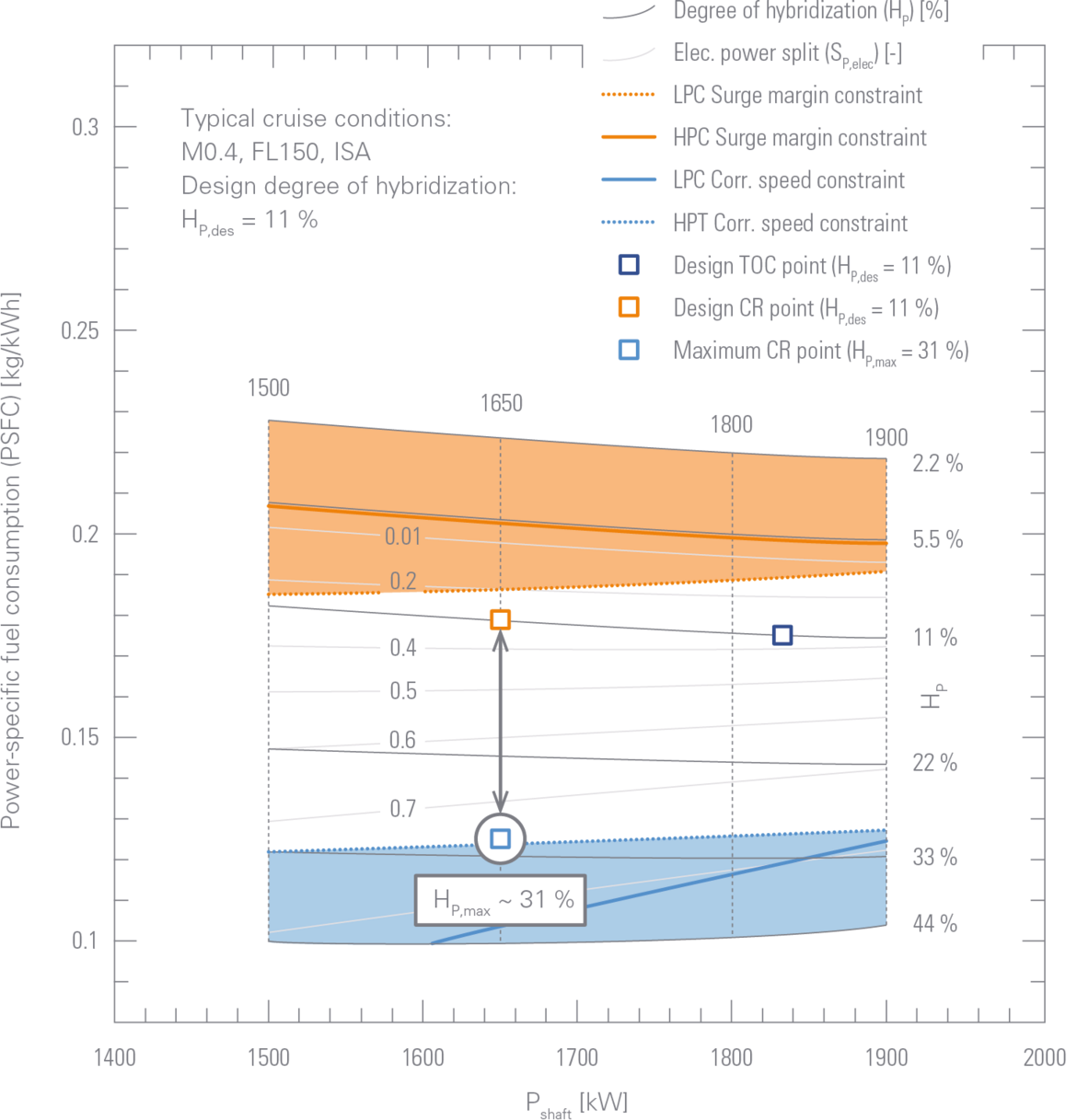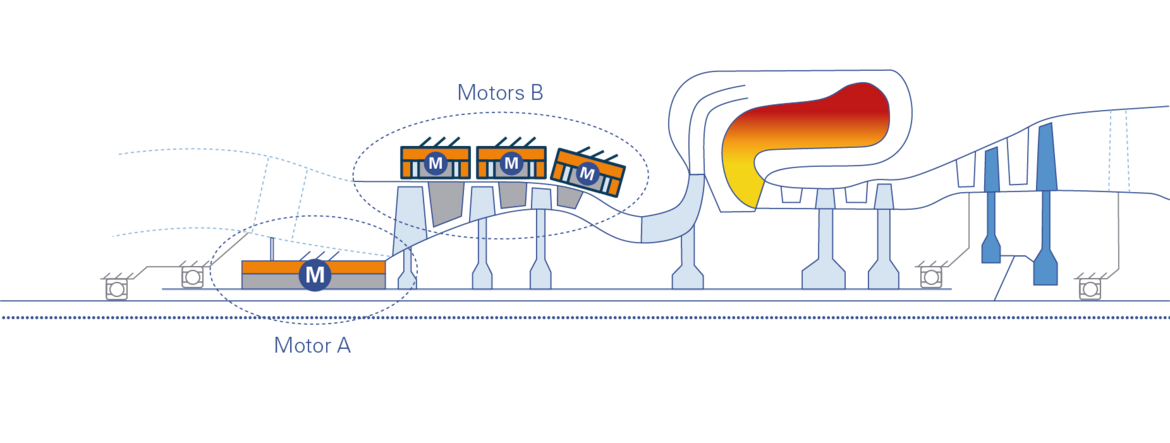Most studies on hybrid-electric propulsion neglect the impact of hybridization on the operational behavior of the propulsion system. To investigate this effect, the LuFo project HybVer (hybridized compressor concepts) examines a cycle-integrated parallel hybrid propulsion concept, with electrical assistance from the high-pressure spool combined with an electric drive of individual compressor stages.

Assuming on-board batteries to supply the electric energy, the studies in HybVer focus on regional turboprop and mid-size helicopter applications. A feasible system layout having been selected, the propulsion system was sized for the design mission, optimizing key cycle parameters toward a hybridization degree (HP,des) of 20 % for the helicopter and HP,des= 11 % for the regional application.
As most aircraft are operated far below their actual design range, higher degrees of hybridization and improved fuel burn can be achieved on shorter missions when fully utilizing the installed electrical storage capacity. The recent performance investigation provides new insights into the maximum hybridization levels allowable under consideration of the operational limits of the turbo components involved. The results show that for the helicopter application, a maximum hybridization degree of 40 % during cruise conditions could be achieved. For the regional turboprop application, a maximum hybridization degree of 31 % is possible. Compared to the design mission, this means significant CO2 and NOx emission reductions on shorter stage lengths, enabling an optimized propulsion system sizing for the entire operating spectrum of the aircraft.
Investigation of feasible hybridization degrees during cruise

The performance study shows that for a regional turboprop, a maximum hybridization degree of HP,max= 31 % is reached for HP,des= 11% under realistic operational limits, significantly reducing power-specific fuel consumption during cruise.
Glossary: LuFo aviation research program, CO2 carbon dioxide, nitrogen oxide, HP,des design degree of hybridization

The underlying project was funded by the Federal Ministry for Economic Affairs and Climate Protection under the funding code 20E2111A.

